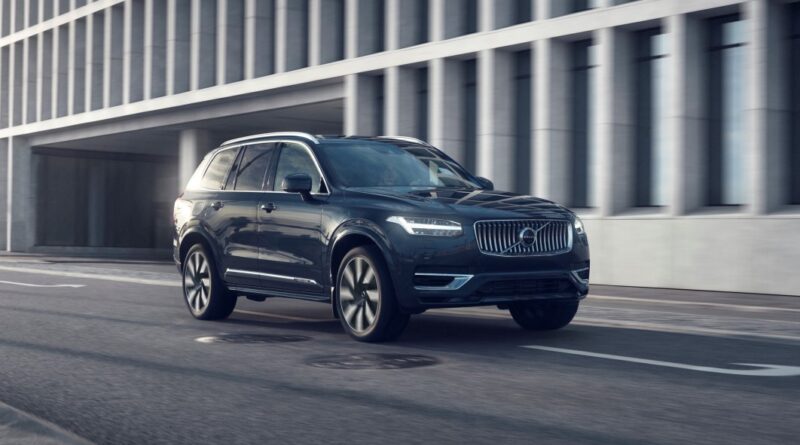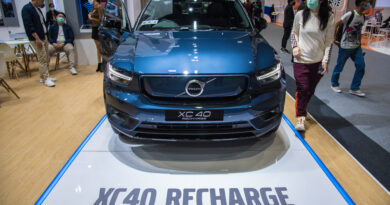2024 Volvo XC90 Review: Aging gracefully, but aging nonetheless
Pros: Elegant, minimalist design; powerful PHEV with usable EV range; robust standard safety and driver assistance suite; standard all-wheel drive
Cons: Too many vehicle functions buried in touchscreen menus; upgrading to PHEV is costly; non-plug-in engines are unexceptional
The 2024 Volvo XC90 three-row SUV is a real charmer, despite it showing its age, thanks to beautiful design, comfortable driving and an efficient and powerful plug-in hybrid. It’s Swedish through and through with the elegant and upright exterior to the simple, modern interior with quality materials and nifty patterns on plastics and upholstery. As with all Volvos, it’s stuffed with safety features that are standard, and boasts excellent crash test ratings. And the plug-in hybrid XC90 Recharge is a serious standout. Not only is it the most powerful and refined XC90 available, it has a useful amount of electric range at more than 30 miles.
With that said, it is starting to show its age. It is, afterall, eight years into this generation. Its infotainment in particular, even with more Google integration, is a bit clunky and makes some features difficult to find. Its base non-plug-in four-cylinders aren’t quite as refined nor as powerful as some of the competition’s six-cylinder engines. The ride with big, optional wheels can be brittle, too. In general, many rival luxury SUVs are better to drive.
There is a successor of sorts to the XC90 hitting dealers this year. It’s the EX90, which is an all-electric three-row SUV. It’s completely new, though will cost about as much as the plug-in hybrid XC90 to start. Of course, an EV isn’t for everyone, which means the XC90 shall remain the go-to Volvo three-row for many.
Interior & Technology | Passenger & Cargo Space | Performance & Fuel Economy
What it’s like to drive | Pricing & Trim Levels | Crash Ratings & Safety Features
What’s new for 2024?
There are no significant changes to the 2024 XC90
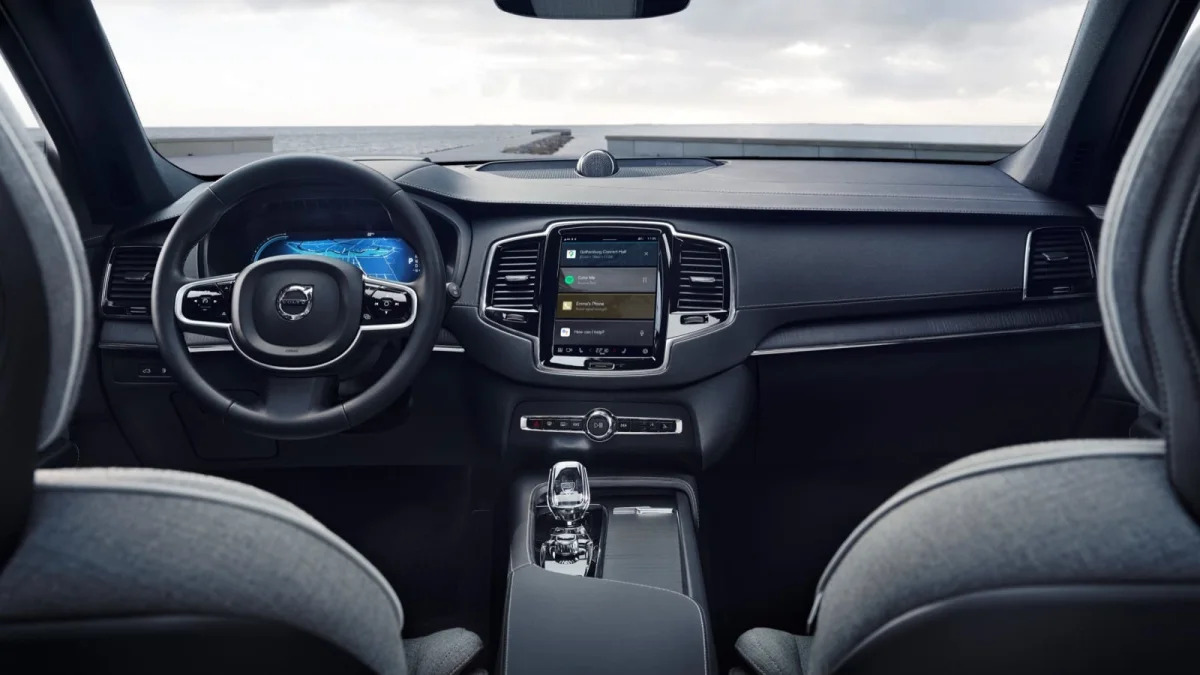
What are the XC90’s interior and in-car technology like?
No matter the trim level, the 2023 Volvo XC90’s cabin is a lesson in refined minimalism.
The vibe is different from any of the German or Japanese luxury machines. Where BMW and Mercedes dashes are festooned with design flourishes and obvious luxury, the XC90 is laid back and staid. Muted wood inlays grace the dash of luxury models, whereas metal inlays are used on sportier builds. You can get a dose of flash with the Ultimate trim and its Orrefors Crystal shift knob, but even that piece pales in comparison to BMW’s gaudy glass-cut gear lever.
The switch to Google built-in infotainment is an improvement in usability over Volvo’s old Sensus software. We like the familiarity and ease of use of Google Maps, and the Google Assistant is one of the more natural voice control programs you’ll find in a vehicle. All of your climate controls are placed within the screen, so you’re left without any physical buttons there (though that was the case with Sensus as well). A few audio playback buttons can be found below the screen, but the touchscreen is still critical to most functions. And with many features buried on side menus with lots of little icons, the system is clunkier than systems in rivals; Genesis and Jeep for instance. Volvo’s 12-inch digital instrument cluster comes standard, and it continues the minimalism theme with a simple layout and limited customization. As you’d expect in a big luxury crossover, this one can be loaded to the gills with desirable features like a head-up display and massaging seats.
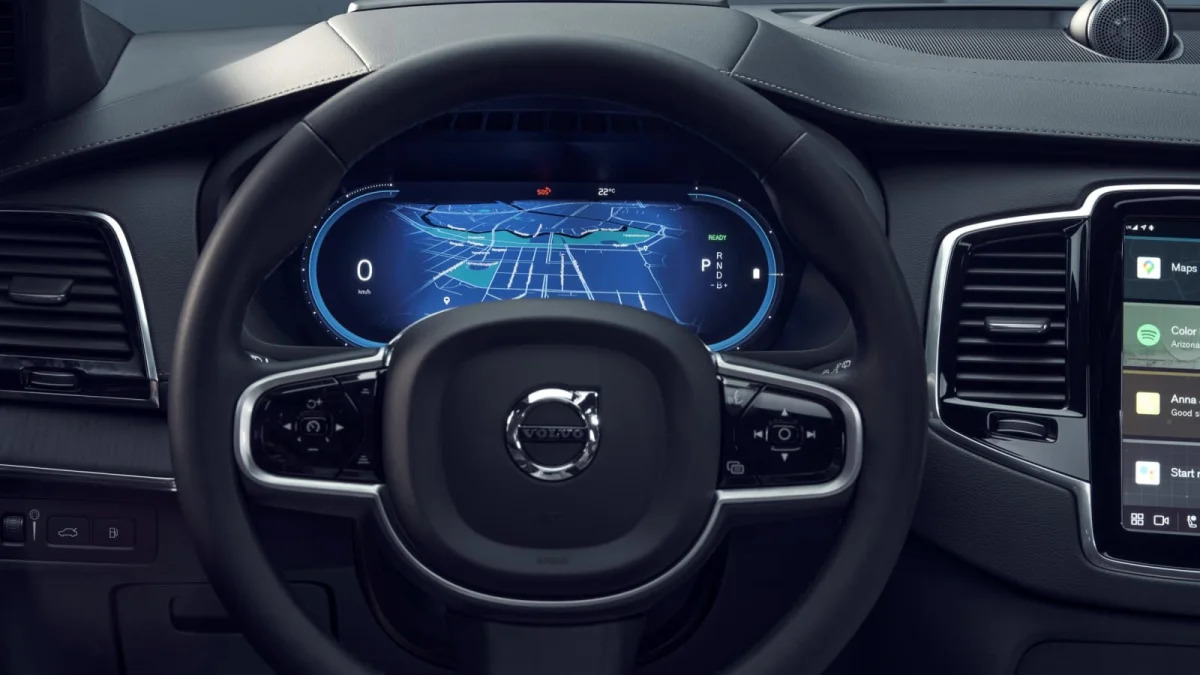
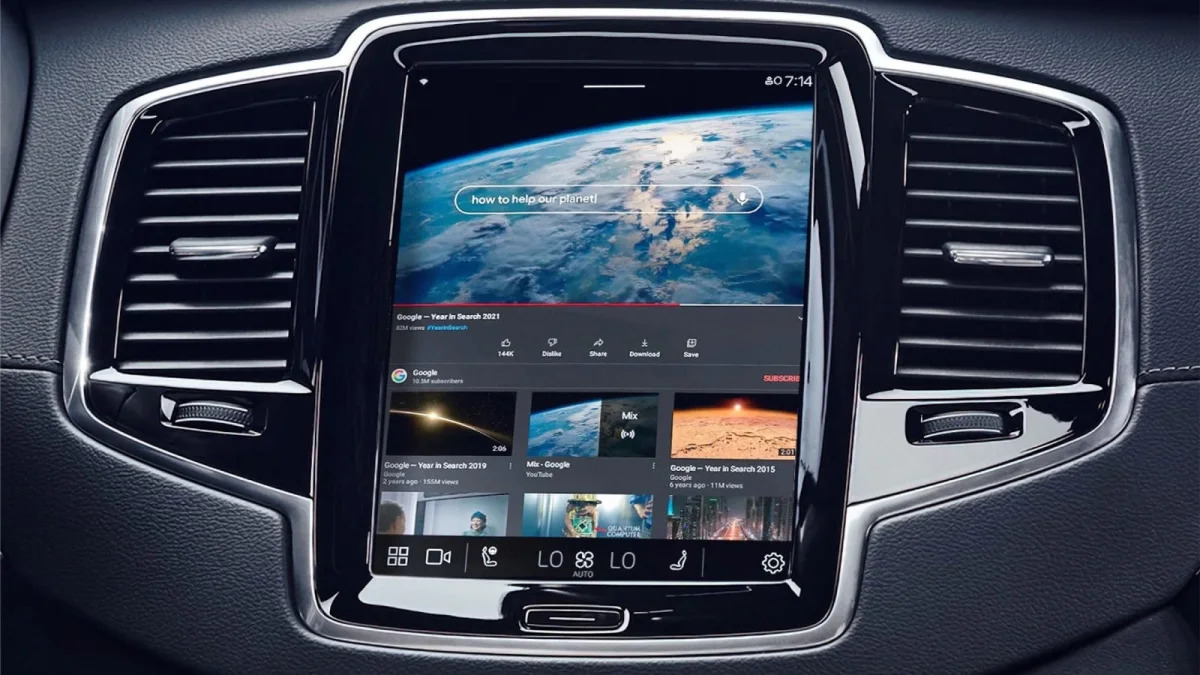
How big is the XC90?
The XC90 is the biggest Volvo, allowing for three rows of passengers to come along for the ride. Its length is similar to other midsize crossovers like the BMW X5, Mercedes-Benz GLE, Acura MDX and Genesis GV80. However, not only can you fit six or seven passengers in the XC90, there’s a very good chance that all those passengers will actually be comfortable. The third row is actually habitable for adults, which is a rarity in luxury crossovers apart from the Lexus TX and bigger, pricier models like the BMW X7 and Mercedes-Benz GLS.
The XC90’s boxy shape is well-suited to cargo, though, and is similarly better than most competitors. That is particularly true with all rows raised, as our XC90 Luggage Test showed it capable of holding four medium suitcases behind the third row. You’ll be lucky to fit two in most competitors.
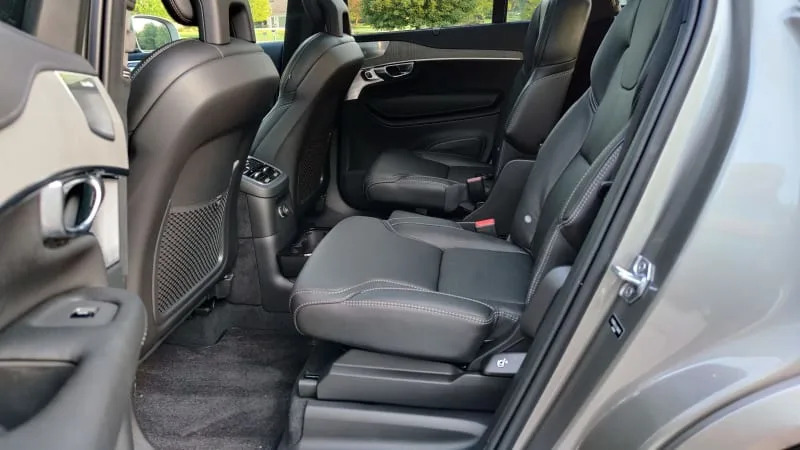
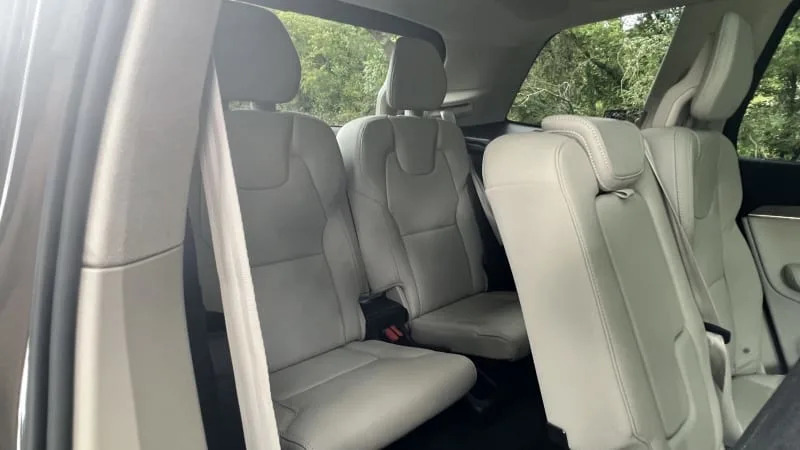
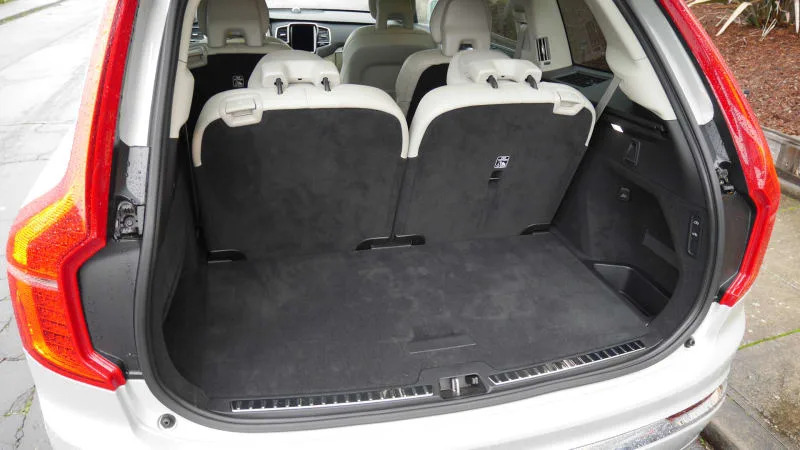
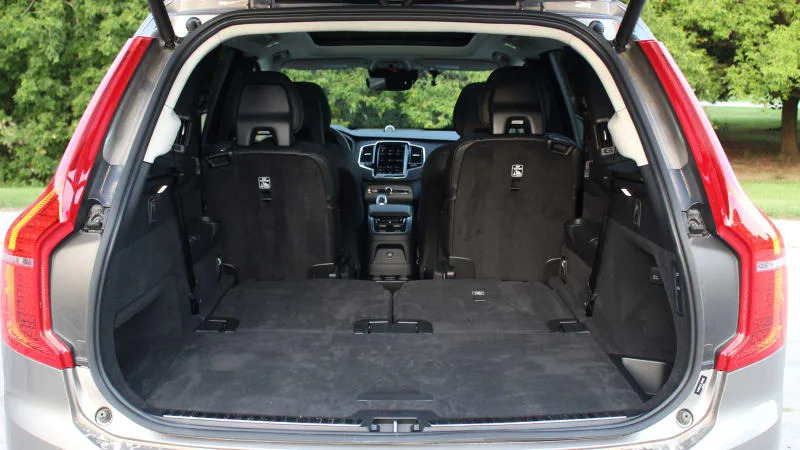
What are the XC90’s fuel economy and performance specs?
All XC90s have some amount of electrification, starting with mild-hybrid “B5” and “B6” powertrains for its gas-powered XC90, and ending with the XC90 Recharge with the plug-in hybrid powertrain that has 33 miles of electric range. All 2024 XC90’s come with an eight-speed automatic transmission and all-wheel drive.
The B5 mild hybrid is the base powertrain. Its turbocharged 2.0-liter engine produces 247 horsepower and 258 pound-feet of torque, and uses a braking-regenerated 48-volt battery and an integrated starter/generator to assist the engine and improve fuel economy. It’ll go from zero to 60 mph in 7.3 seconds. Its fuel economy is rated by the EPA at 22 miles per gallon city, 27 mpg highway and 24 mpg combined.
The B6 is able to get 295 hp and 310 lb-ft out of its 2.0-liter inline-four that’s turbocharged, supercharged and aided by the mild-hybrid system. That makes it quicker to 60 miles per hour, at 6.4 seconds, but it gets slightly worse fuel mileage at 20/26/23 mpg.
Our favorite powertrain of the lineup is the most expensive, but also the most powerful and efficient. The Recharge’s T8 plug-in hybrid features — you guessed it — a 2.0-liter turbocharged gas engine, but it is paired with a 143-hp electric motor on the rear axle and a large battery replenished by plugging in at night. The powertrain is good for 455 hp and 523 lb-ft of torque, which shrinks the 0-60 time to a flat 5 seconds. Interestingly, with the gas motor powering the front axle and the e-motor powering the rear, the XC90 T8 operates as a rear-wheel-drive car when only using electric power, and front-wheel-drive when only using gas. It blends gas and electric power simultaneously to provide all-wheel drive. It will go 33 miles on the battery alone, and when the battery is drained, the gas engine delivers 27 mpg combined for city and highway driving. In combined driving with a full battery, the EPA gives it a fuel economy rating of 58 mpg-equivalent.
What’s the XC90 like to drive?
The Volvo 2.0-liter four-cylinder engines may not sound sufficient enough for a large vehicle like the XC90, but it has enough grunt to get the SUV around with relative ease. There’s just not much excitement. The B5 is naturally slower than the others, but the torque from the turbo is enough to keep up with traffic. The B6, with its extra power, will feel a little more eager to match highway speeds. Neither engine sounds especially sweet nor sour.
The Recharge plug-in hybrid is the fastest of the bunch, as power comes on strong right away with the help of the electric motor. Even with the rear axle getting power from this motor, there’s still enough power going forward to spin the front tires up and get torque steer. In full-electric mode, the XC90 is still perfectly usable, but it’s certainly not as quick as when using both the motor and engine.
Handling is nothing to get excited about, but it’s still plenty responsive for a vehicle of its stature. The Acura MDX, BMW X5 and Mercedes-Benz GLE are more fun to drive fast. Volvo’s optional air suspension can stiffen and improve body control marginally, but it’ll never come close to being what many would consider engaging. That’ll be OK for many, especially those more interested in comfort. In that case, the ride is plush when you opt for the smaller wheel sizes, but it can get uncomfortably jarring if you go for the optional 21-inch wheels. Just as a good luxury vehicle should be, the XC90 is quiet on the highway. Its Pilot Assist driving assist system tracks in the center of lanes well and makes highway driving just that much easier.
What other Volvo XC90 reviews can I read?
2021 Volvo XC90 Recharge Road Test
Managing Editor Greg Rasa owns a ’17 XC90 T5. He explains how much has changed over the years, plus the differences between the base turbo inline-four and the range-topping plug-in hybrid.
2020 Volvo XC90 T8 First Drive Review | A vroom with a view
We drive the XC90 for the first time after its most recent update. Volvo massaged the styling, added tech and re-worked its lineup last year.

2020 Volvo XC90 Inscription Interior Driveway Test | A lesson in minimalist luxury
We take a deep dive into the interior of the 2020 Volvo XC90 T8 Inscription. Read this to see the inside of this crossover from every angle.
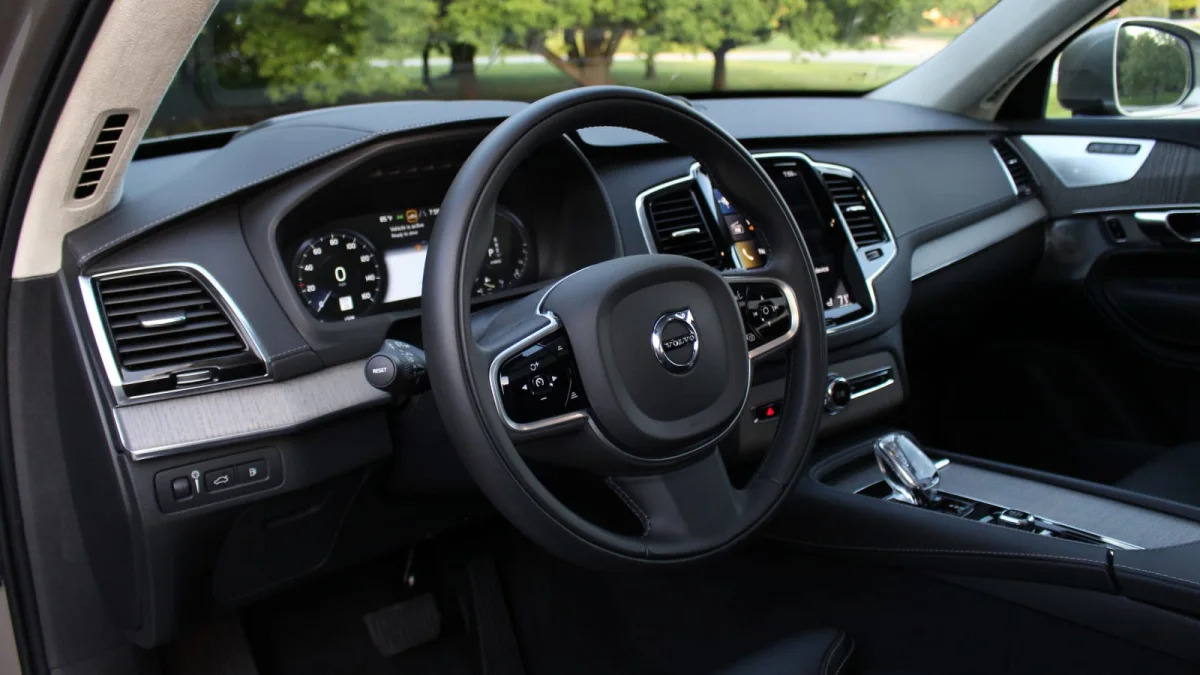
2020 Volvo XC90 Luggage Test
We see how much luggage fits behind its raised third-row seat.
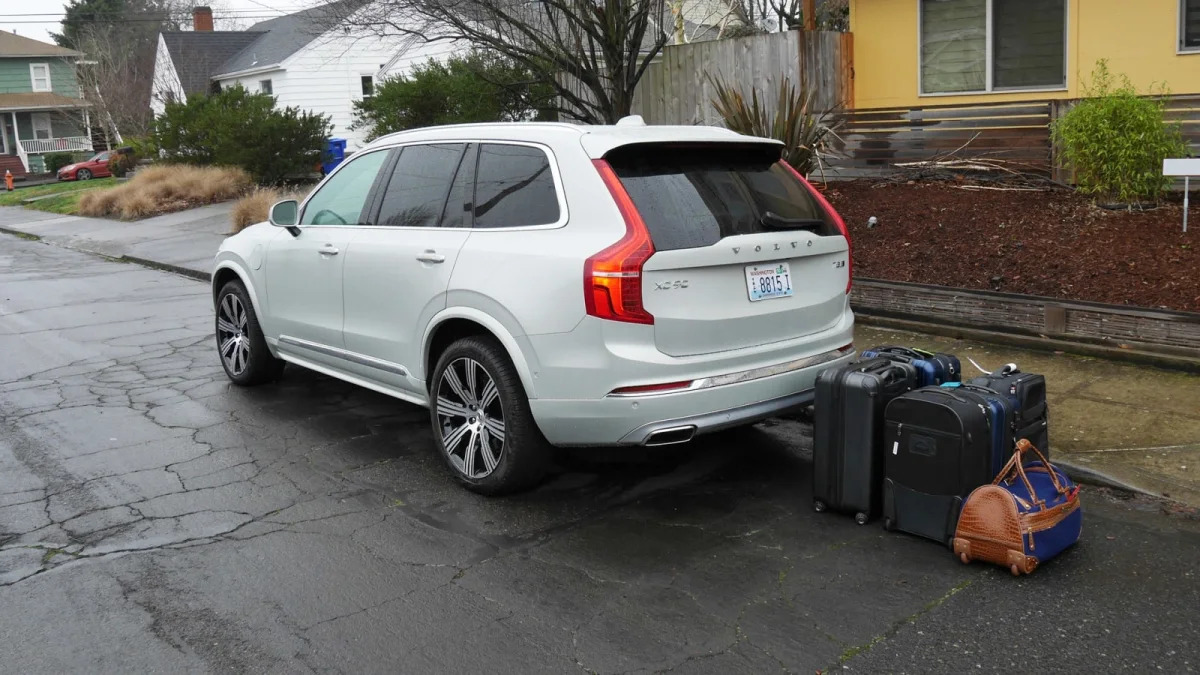
2020 Volvo XC90 T6 R-Design Drivers’ Notes | With a touch of Polestar
Our staff takes a spin in the sporting middle child of Volvo’s XC90 lineup. Our tester was equipped with a Polestar Optimization, which increases power through a tune from the factory.
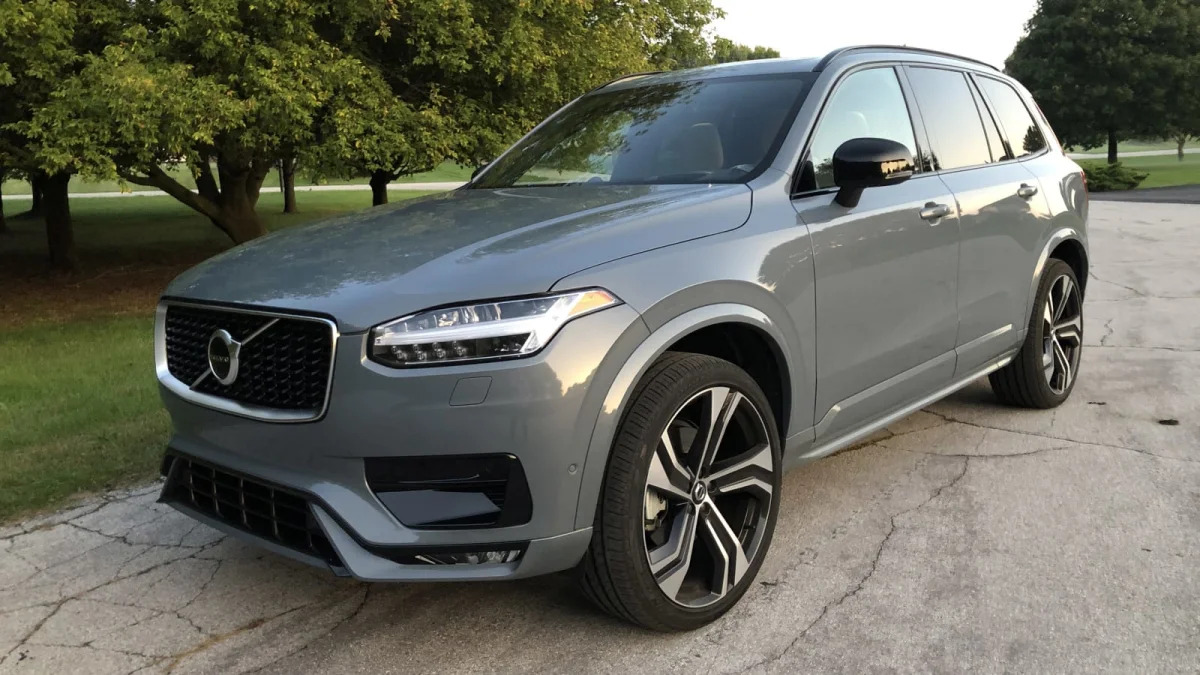
What is the 2023 XC90’s price?
A base B5 in Core trim starts at $57,895, including $1,295 in destination fees. It comes standard with all-wheel drive, 19-inch wheels, panoramic sunroof with power sunshade, four-zone climate control, Google built-in infotainment with a 9-inch display, a 12-inch digital instrument panel, Volvo’s Pilot assist driver assistance system, leatherette upholstery, seating for seven, heated front seats, and four years of Google Assistant, Google Maps and Google Play. Stepping up to either the Plus or Ultimate trim brings a large number of other features along for the ride. You can find a full breakdown of features, specs and local pricing for the XC90 here on Autoblog (and here for the XC90 Recharge).
- B5 Core: $57,895
- B5 Plus: $61,795
- B6 Core: $62,795
- B6 Plus: $65,395
- B6 Ultimate: $71,395
- Recharge Core: $73,195
- Recharge Plus: $74,895
- Recharge Ultimate: $80,895
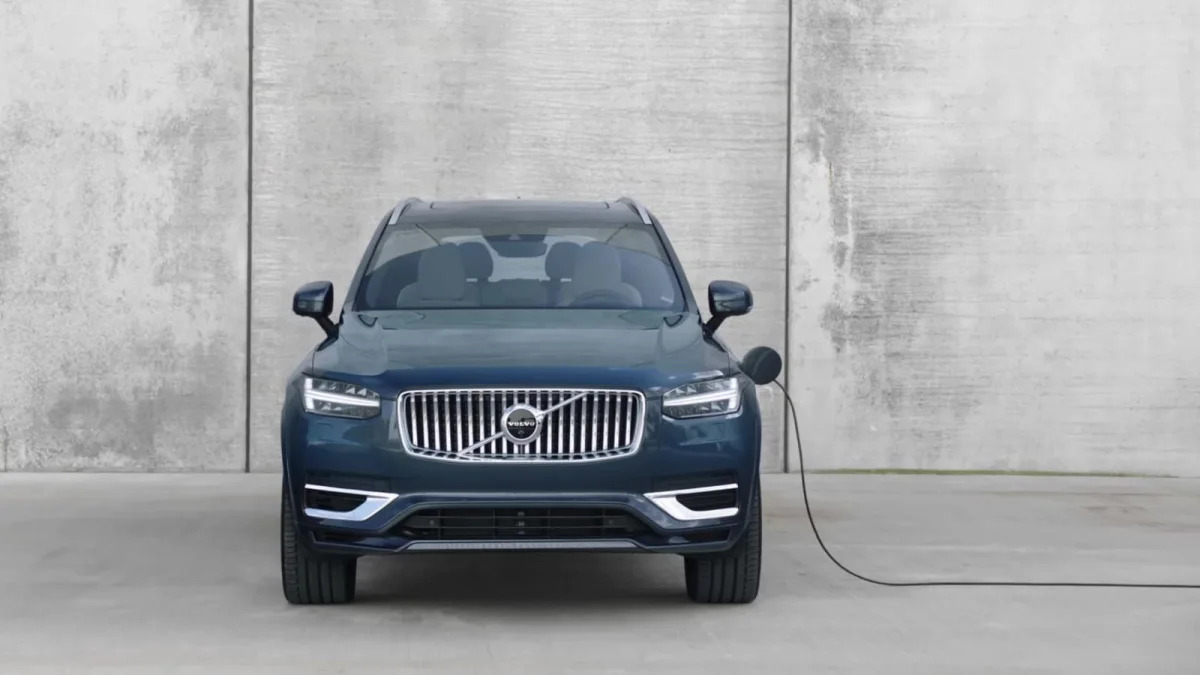
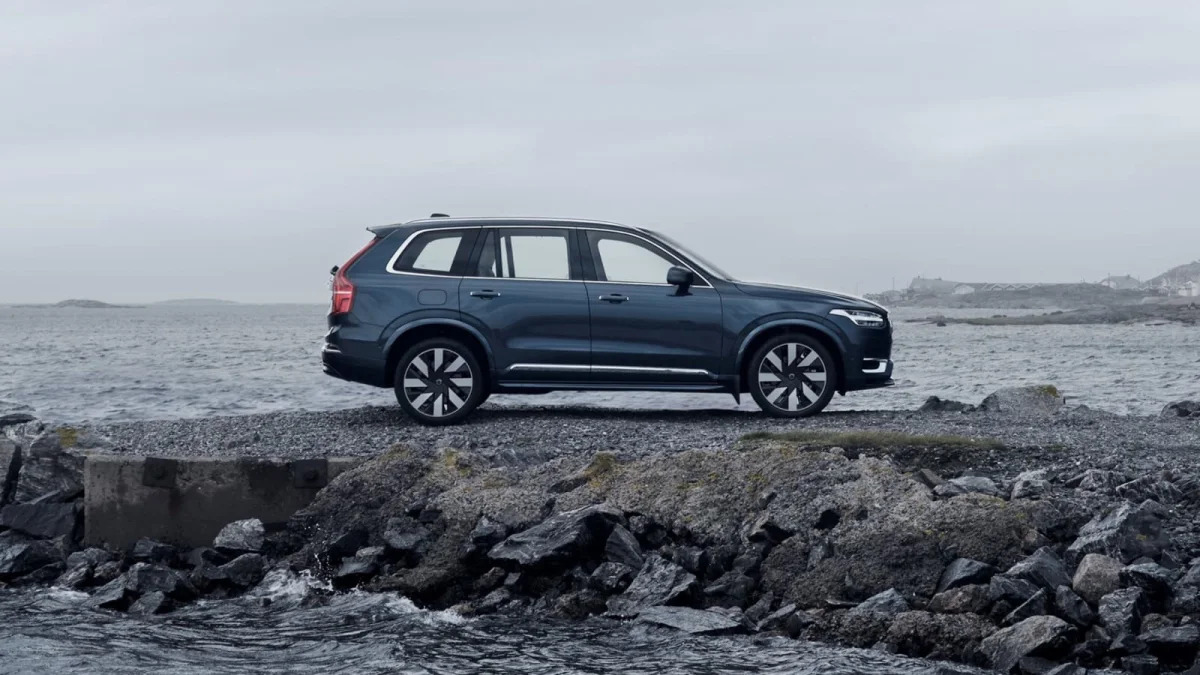
What are the XC90’s safety ratings and driver assistance features?
Volvo’s reputation for safety precedes itself. So of course, a vast number of driver assistance systems are made standard on the XC90. These include lane-keeping assist, front and rear collision warning, automatic emergency braking, and blind-spot monitoring with rear cross-traffic alert/braking. A smart and capable adaptive cruise control system with lane-centering steering assist called Pilot Assist is also standard equipment.
The National Highway Traffic Safety Administration awarded the XC90 five (out of five) stars overall, with five-star ratings for frontal and side crashes, and four stars for rollover. It also earned the Insurance Institute for Highway Safety’s highest Top Safety Pick+ designation, with superb ratings all around. It got top marks in all crash tests with second-highest “Acceptable” ratings for headlights and child seat anchor access. The vehicle-to-pedestrian collision prevention systems also received the highest “Superior” rating in the day, and second-highest “Advanced” rating at night.
Related video:

